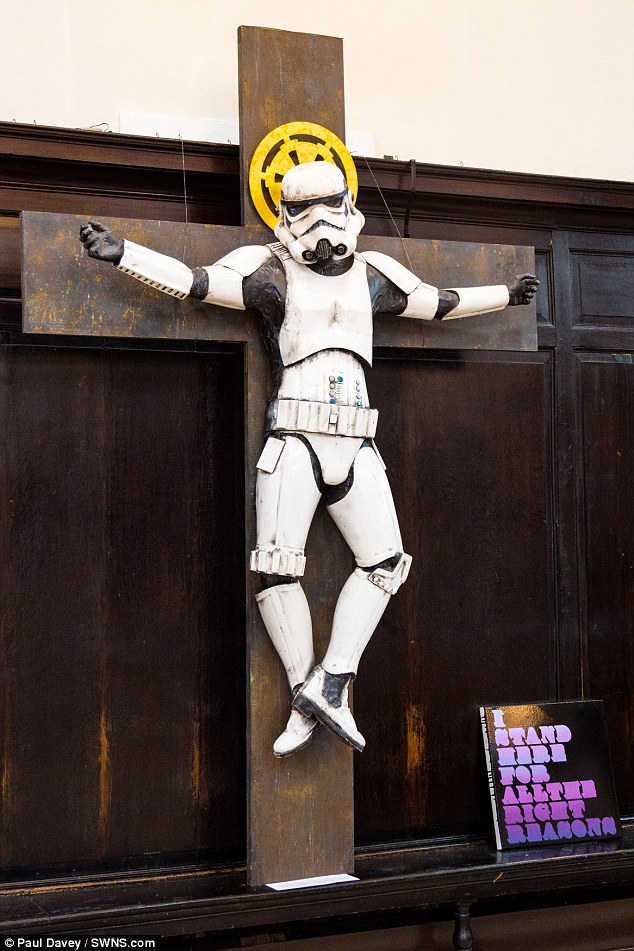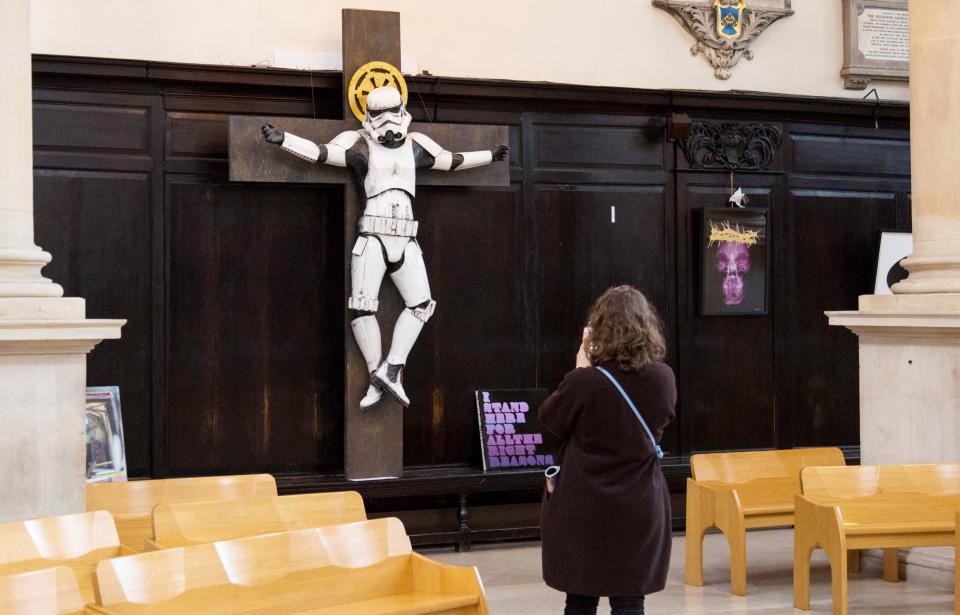
A member church in the Church of England’s Archdiocese in London has placed a Storm Trooper – from the famous Star Wars movie franchise – onto the cross for public display. Saint Stephen Walbrook Church, so named after Saint Stephen of the Bible and Walbrook, a nearby stream, displayed the crucified Storm Trooper in order to “provoke thought from artists grappling with their response to the challenge and scandal of Christ’s Cross.” Or, so says the pastor who displayed it, the Reverend Jonathan Evens.
The display was a part of an art presentation associated with Art Below, entitled “Stations of the Cross,” and showcasing pop-culture themed religious art. A number of parishioners objected to the display, but a deacon was given permission to display it by the aforementioned Reverend Evens.
In a bizarre attempt of philosophical intrigue and deep-thoughtedness, Evens invoked the name of the 20th Century author and Christian thinker, C.S. Lewis:
For me this image raises similar questions to those CS Lewis raised in his science fiction trilogy, ie that were other artists to exist on other planets, would Christ be incarnated among those races in order to die for their salvation? Lewis’s view, which he sets out in the story, is that Christ would do so.
Of course, Lewis created pop-culture icons of his own – like the Chronicles of Narnia’s famous Aslan – but he never displayed something as perverse as a crucified soldier of the Dark Side. It also makes one question exactly who out there is wondering about the efficacy of Christ’s atonement for extraterrestrial life and how pertinent that is to the Church of England.
The “art” was created by artist, Ryan Callanan, who then displayed it at the very front of the 500-year-old church. After complaints, it was moved to the back of the church.
One church attendee told the London Telegraph, “It’s a bit silly really – why use our church? It’s plainly offensive to Christians, to be honest.”
As a Reformed Baptist holding to the 1689 London Baptist Confession and embracing Sola Scriptura while affirming the general counsel of the Historic Christian Church as important – albeit not infallible – witness, I would like to introduce people to historic Christian iconoclasm that teaches this image is no less offensive than a display of Christ upon the cross. Not only are images of God prohibited (and Christ Jesus is God), but it is displaying Him in his humiliation, and falls far short of Christ’s current glorified state in Heaven, having been risen from the dead.
4 “You shall not make for yourself a carved image, or any likeness of anything that is in heaven above, or that is in the earth beneath, or that is in the water under the earth. 5 You shall not bow down to them or serve them, for I the Lord your God am a jealous God, visiting the iniquity of the fathers on the children to the third and the fourth generation of those who hate me, 6 but showing steadfast love to thousands of those who love me and keep my commandments.”(Exodus 20:4-6)
Images of Christ were strictly forbidden in the first 400 years or so of church history, under direct Apostolic direction in the earliest of church history in the New Testament, and only became common place by the paganization of Christianity in Rome. And even then, the acceptance of such imagery was slow and reluctant.











